Normandy, with its rugged coastline, rolling hills, and verdant pastures, paints a picture of tranquil beauty that belies its tumultuous past. It was here, along the sandy stretches of beaches like Omaha and Juno, that the D-Day landings of June 6, 1944, unfolded, marking the beginning of the end of World War II in Europe. These beaches, alongside poignant memorials and cemeteries, stand as solemn reminders of the sacrifices made for freedom. Day trips from Paris to Normandy offer visitors a deeply moving connection to the past, an opportunity to reflect on the courage and resilience of those who fought and fell.
But Normandy’s allure extends beyond its wartime relics. This region boasts architectural wonders that span centuries, from the gothic splendor of Rouen Cathedral, a structure that survived lightning strikes, fires, and bombings, to the ethereal beauty of Mont Saint-Michel. This island commune, rising majestically from the sea, is a testament to medieval ingenuity and remains one of France’s most iconic landmarks. Its abbey, perched atop the island, offers breathtaking views and an unforgettable journey back in time.
The charm of Normandy also lies in its picturesque villages, such as Honfleur, with its vibrant port colored by fishing boats and lined with slate-fronted houses. It’s a place where the legacy of Impressionist painters lingers in the air, inviting visitors to see the world through their transformative lens. Claude Monet’s home and gardens in Giverny further illustrate this connection, where the lily ponds and Japanese bridge that inspired his most famous works can be explored, providing a vivid, living context to his art.
Normandy’s landscapes themselves are a canvas, from the serene beaches that once bore the brunt of war to the peaceful orchards and fields that produce the apples for its renowned cider and Calvados. The region’s culinary heritage, with its emphasis on fresh, local ingredients from both land and sea, adds another layer to its appeal. Tasting your way through Normandy, from creamy Camembert to savory seafood dishes, is as much a part of the experience as visiting its historical sites.
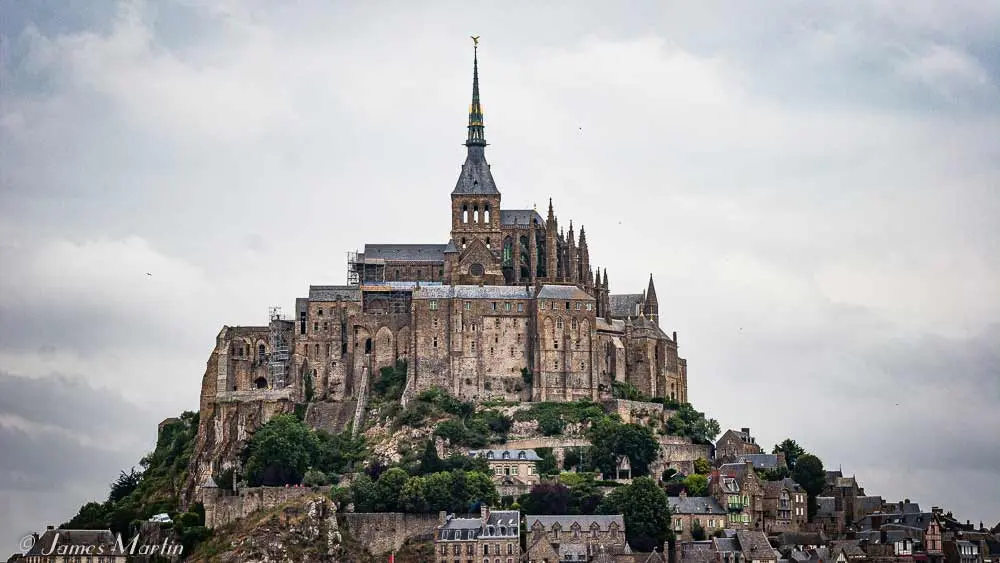
Source: Mapping Europe
The importance of experiencing Normandy from Paris cannot be overstated. It offers a profound contrast to the urban vibrancy of the French capital, a reminder of the country’s rural roots and historical depth. Day trips from Paris to Normandy bridge these two worlds, making the past accessible and comprehensible, allowing visitors to grasp the enormity of events that shaped not just France, but the entire world.
The journey from Paris to Normandy, therefore, is more than a mere change of scenery. It’s an immersive dive into history, an appreciation of art and architecture, and a celebration of natural beauty. It’s an essential pilgrimage for anyone looking to understand France’s complex past and vibrant present. Mentioning “day trips from Paris to Normandy” isn’t just an itinerary suggestion; it’s an invitation to connect with the soul of a region that has played a pivotal role in shaping global history.
Embarking on this journey means preparing oneself for an experience filled with contrasts: the solemnity of the American Cemetery and the tranquil beauty of Monet’s gardens; the Gothic grandeur of Rouen Cathedral and the pastoral charm of apple orchards. Each site, each town, each landscape tells a part of the story of Normandy, contributing to a fuller understanding of this unique region.
Why Choose Day Trips from Paris to Normandy?
Choosing Normandy for a day trip from Paris is a decision that invites travelers into a profound narrative woven through time, from the echoes of World War II to the enduring strokes of Impressionist artistry, set against a backdrop of breathtaking natural beauty. This journey is not merely a transition from the urban elegance of Paris to the pastoral charm of Normandy but a passage through layers of history, culture, and landscapes that define and enrich the French heritage.
The Weight of History: Normandy’s Role in World War II
Normandy is hallowed ground, a region that played a pivotal role in one of the most significant moments of the 20th century: the D-Day landings of June 6, 1944. This day marked the beginning of the end of World War II in Europe, a feat achieved through the bravery and sacrifice of thousands. The beaches of Normandy, including Omaha, Utah, and Juno, serve as vast, open-air museums, offering solemn, reflective spaces where visitors can pay homage to the courage of the Allied forces. The region is dotted with memorials, museums, and cemeteries that preserve the memory of this monumental effort and the profound cost of freedom.
Beyond its historical significance, Normandy is a treasure trove of cultural heritage. It is the birthplace of Impressionism, a movement that revolutionized art and how we perceive the world around us. Claude Monet’s home and gardens in Giverny are testament to this legacy, where the lily ponds and Japanese bridge that inspired his “Water Lilies” series can still be seen today. The region’s architectural marvels, such as the Gothic Rouen Cathedral, immortalized by Monet’s series of paintings, and the enchanting island commune of Mont Saint-Michel, a UNESCO World Heritage site, offer visitors a glimpse into the medieval and Gothic periods’ grandeur.
Normandy’s Breathtaking Natural Beauty
Normandy’s natural beauty is as compelling as its history and culture. The region boasts a diverse landscape, from the dramatic cliffs and sandy beaches along the coast to the serene countryside dotted with orchards and dairy farms. This natural splendor not only offers a visual feast but also contributes to Normandy’s renowned culinary traditions. The region is famous for its dairy products, like Camembert cheese, and beverages, such as Calvados apple brandy and cider, which visitors can taste and savor.
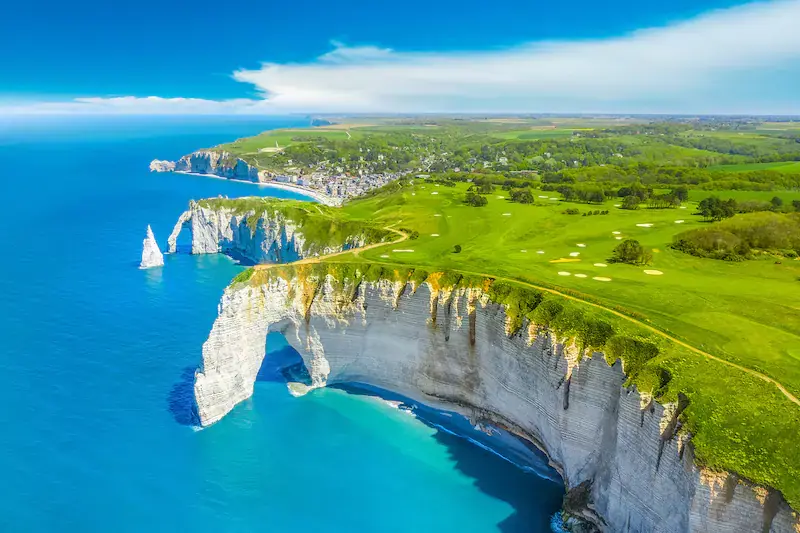
Source: Hotels.com
Top Destinations for Your
Day Trip
D-Day Beaches and Memorials: The significance of Omaha Beach, Pointe du Hoc, and the American Cemetery
The D-Day beaches and memorials in Normandy stand as solemn reminders of June 6, 1944, a day that marked a pivotal turn in World War II and showcased the courage, sacrifice, and resilience of the Allied forces. Among these historic sites, Omaha Beach, Pointe du Hoc, and the American Cemetery are particularly significant, each telling a part of the broader narrative of the Normandy landings and the liberation of Europe.
Omaha Beach
This beach is perhaps the most famous of the Normandy landing sites, known for the formidable German defenses that awaited the Allied forces and the heavy casualties suffered by American troops. Today, Omaha Beach is a place of reflection for visitors, a stretch of sand where one can ponder the immense bravery required to storm the beaches under withering fire. The remains of German fortifications still dot the landscape, providing a stark reminder of the day’s challenges.
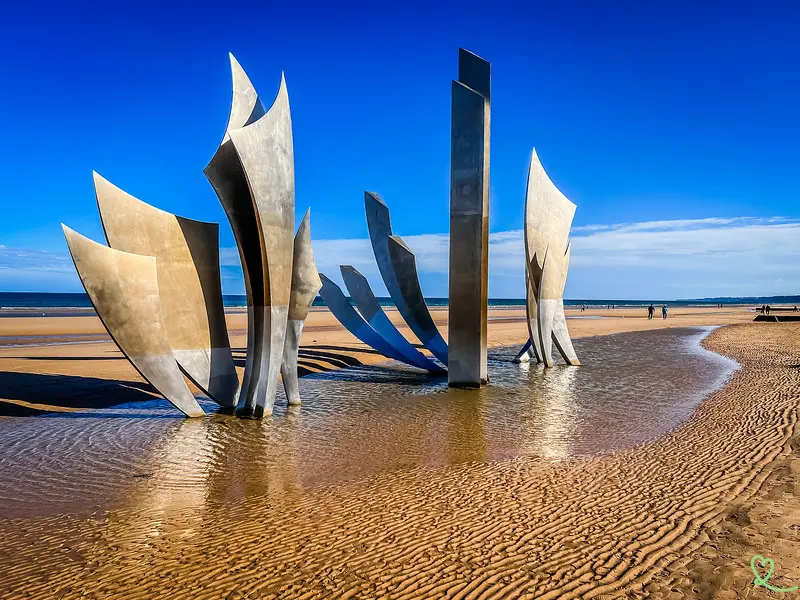
Source: Normandie Lovers
Pointe du Hoc
Standing on a promontory between Omaha and Utah beaches, Pointe du Hoc is a testament to the daring and tenacity of the Allied forces, particularly the U.S. Army Rangers who scaled the cliffs under heavy fire to neutralize German gun emplacements that threatened the landings at both beaches. The site is preserved as a battlefield, with bomb craters, bunkers, and gun emplacements still visible, offering visitors a visceral sense of the battle’s intensity.
The American Cemetery
Overlooking Omaha Beach, the Normandy American Cemetery and Memorial is a hallowed place of rest for over 9,000 American military dead, most of whom lost their lives in the D-Day landings and ensuing operations. The cemetery is a place of profound solemnity and beauty, its perfectly aligned white crosses and Stars of David stretching towards the horizon, a poignant tribute to the sacrifices made for freedom. The visitor center provides educational exhibits about the operations and personal stories of those who fought and died.
Visiting these sites offers a deep and moving understanding of the scale and significance of the Normandy landings. It’s an opportunity to pay respects to those who gave their lives for liberation and to reflect on the values of bravery, sacrifice, and perseverance. The D-Day beaches and memorials do not merely represent historical events; they are places where the past continues to speak, reminding us of the cost of peace and the value of freedom.
The Enchanting Mont Saint-Michel: Exploring the architectural marvel and its historical significance
Mont Saint-Michel stands as a beacon of architectural innovation and historical significance, a jewel in the crown of Normandy’s myriad attractions. This majestic island, with its imposing abbey reaching skyward, appears almost otherworldly against the backdrop of the Normandy coast. Its silhouette at dusk or dawn is an iconic image of France, capturing the imagination of visitors and locals alike.
The foundation of Mont Saint-Michel dates back to the 8th century when, according to legend, the Archangel Michael appeared to Bishop Aubert of Avranches, instructing him to build a church on the rocky island then known as Mont Tombe. Over the centuries, it evolved from a simple abbey into a Benedictine monastery during the 10th century, reflecting the Romanesque architectural style through its church, cloisters, and crypts. The Gothic choir, replacing the Romanesque choir that collapsed in the 15th century, stands as a testament to the architectural evolution of the abbey.
The strategic significance of Mont Saint-Michel during the Hundred Years War between England and France cannot be overstated. The construction of formidable walls and fortifications around the island made it impregnable, a solitary outpost of French resistance amid English-occupied territories. Its ability to withstand sieges became a symbol of French national pride and resilience.
Mont Saint-Michel’s architectural marvel is not just in its grand abbey but in the medieval village that clings to its sides, a winding maze of narrow streets and historic buildings that lead pilgrims and visitors alike up to the abbey. The engineering prowess it took to construct this abbey on a rock amid fluctuating tides is a marvel of medieval architecture, demonstrating the ingenuity and determination of its builders.
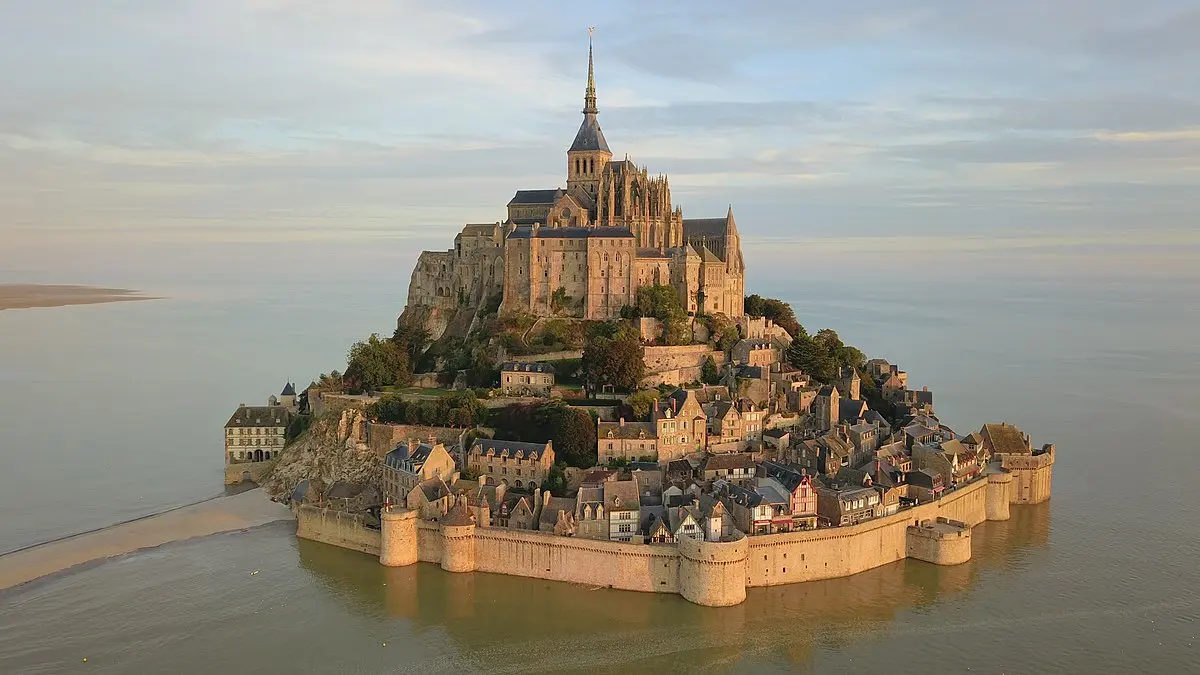
Source: Wikipedia
The tidal phenomenon surrounding Mont Saint-Michel adds to its enchantment. The tides vary greatly, at times surrounding the island completely, making it appear as though it’s floating on the sea, while at low tide, the vast sandbanks reveal themselves. This natural spectacle is one of the most drama.
Today, Mont Saint-Michel is not only a UNESCO World Heritage site but also a living monument to the human spirit’s resilience and creativity. It attracts millions of visitors annually, drawn by its history, architectural beauty, and the sheer force of its presence on the landscape. The abbey continues to be a site of pilgrimage as well as a center for cultural events and celebrations.
The Charm of Honfleur: Discovering its beautiful port, Impressionist connections, and the unique atmosphere
Honfleur, with its picturesque old port, cobbled streets, and historic architecture, encapsulates the charm of Normandy in a way few other towns can. Located at the mouth of the Seine River, where it meets the English Channel, Honfleur has long been a source of inspiration for artists, writers, and musicians, most notably the Impressionists, who were captivated by its unique light and serene beauty.
The Vieux Bassin, or old harbor, is the heart of Honfleur. Surrounded by slender, slate-covered buildings that have stood for centuries, the port remains as lively and colorful as it was in the days when maritime trade flourished. These historic structures, many of which were once homes to wealthy merchants or storerooms for exotic goods brought from distant lands, now house art galleries, cafes, and boutiques. The vibrant reflections of their facades in the calm waters of the harbor have been a favorite subject of artists throughout history.
Honfleur’s most enduring legacy might be its connection to the Impressionist movement. The town was a gathering place for painters like Claude Monet, Eugène Boudin, and Johan Jongkind, who sought to capture the transient effects of light and atmosphere on the landscape. Boudin, born in Honfleur, is often credited with introducing Monet to plein air painting, a practice that became a hallmark of Impressionist technique. The Musée Eugène Boudin, located in the town, pays homage to these artists, showcasing works that depict Honfleur and its surroundings, allowing visitors to see the port through the eyes of its most famous chroniclers.
What sets Honfleur apart is its atmosphere, a blend of maritime heritage and artistic legacy that creates a sense of stepping out of time. The narrow streets that wind away from the port lead to hidden squares, ancient churches like the wooden Church of Saint Catherine, and unexpected views of the Seine estuary. It’s a place where the past is palpable, where the sea’s rhythm and the changing light continue to inspire as they did centuries ago.
Despite its popularity with tourists, Honfleur has managed to retain its soul. The town’s fishermen still head out to sea, as they have for generations, and the weekly markets offer a taste of local produce and craftsmanship. This continuity of life, coupled with the town’s historical and artistic significance, makes Honfleur a living museum, a place where history, art, and daily life intersect seamlessly.
Rouen’s Gothic Splendor: A journey through the city’s history, visiting the Rouen Cathedral and the site commemorating Joan of Arc
Rouen, the historic capital of Normandy, is renowned for its remarkable Gothic architecture and its pivotal role in French history, particularly during the Hundred Years’ War. At the heart of this architectural and historical splendor stands the Rouen Cathedral, an awe-inspiring testament to the evolution of Gothic architecture over the centuries. The city is also famously linked to Joan of Arc, one of France’s national heroines, commemorated at various sites throughout Rouen.
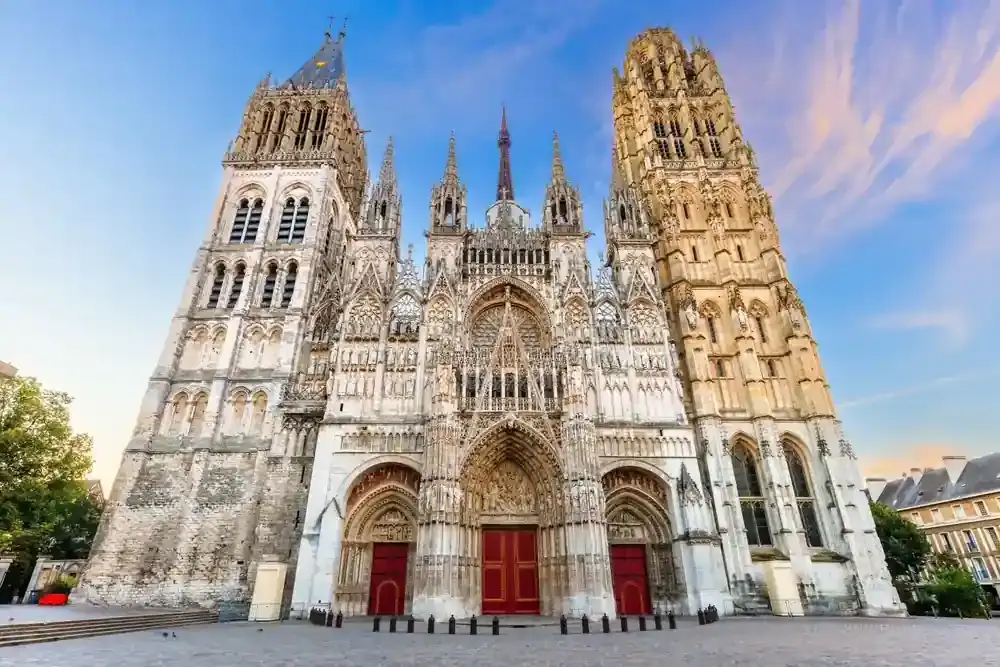
Source: Slurrp
Rouen Cathedral: A Gothic Masterpiece
Rouen Cathedral, or Cathédrale Notre-Dame de Rouen, is a monumental symbol of the city’s rich past and architectural innovation. Its construction spans several centuries, beginning in the 12th century and experiencing various phases of building and restoration that contribute to its complex beauty. The cathedral’s façade is a breathtaking display of Gothic artistry, with intricate carvings, towering spires, and the famous Butter Tower, financed by the sale of indulgences for the consumption of butter during Lent.
One of the cathedral’s most distinguishing features is its soaring lantern tower, which adds a remarkable verticality to its profile. Inside, the cathedral houses the tomb of Richard the Lionheart, containing his heart – a testament to the deep historical ties between Normandy and England. The cathedral has also been immortalized in a series of paintings by Claude Monet, who captured its façade in different lights and weathers, showcasing the building’s dynamic relationship with the sky and city around it.
Joan of Arc: Rouen’s Heroic Legacy
Rouen holds a significant place in the history of Joan of Arc, who was tried for heresy and burned at the stake in the city’s Old Market Square in 1431. Today, the site is marked by a modern church, the Church of Saint Joan of Arc, is a remarkable structure, its sweeping curves and modern stained glass standing in contrast to the ancient cityscape. This church, built in the shape of an upturned boat, symbolizes Joan’s purity and her ultimate sacrifice for France. Inside, windows from the 16th century, originally from the church of Saint-Vincent, which was destroyed during World War II, illuminate the interior with stories of Joan’s life and legacy.
The Historical Joan of Arc Tower, part of the castle where she was imprisoned during her trial, remains a poignant reminder of her captivity and resilience. Visitors can explore the tower and the adjacent museum, which delves into the details of her trial, offering insights into the legal proceedings and the political climate of the time.
Rouen’s Enduring Legacy
Rouen’s dedication to preserving the memory of Joan of Arc speaks volumes about her enduring significance in French history and the city’s pride in its medieval heritage. The juxtaposition of the ancient Rouen Cathedral with the modern church dedicated to Joan of Arc encapsulates the city’s ability to honor its past while embracing the present.
Moreover, Rouen’s rich history is visible in its well-preserved medieval quarter, where half-timbered houses line narrow streets, and the Gros-Horloge, an astronomical clock, marks the passage of time as it has for centuries. This blend of architectural splendor, historical depth, and cultural memory makes Rouen a fascinating city to explore, offering visitors a tangible connection to France’s Gothic past and its national heroes.
Claude Monet’s Gardens in Giverny: Exploring the inspiration behind some of the most famous Impressionist paintings
Claude Monet’s gardens in Giverny are a living canvas that vividly illustrates the boundless inspiration behind some of the most celebrated Impressionist paintings. Located in the Normandy region, just a short journey from Paris, the house and gardens of Claude Monet are a testament to the artist’s profound connection to the natural world and his groundbreaking approach to capturing its ephemeral beauty.
Upon entering Giverny, visitors are transported into the colorful and tranquil world that Monet cultivated both in his gardens and through his artwork. The estate is divided into two main sections: the Clos Normand Flower Garden in front of the house and the Japanese-inspired Water Garden across the road. Each area reflects Monet’s meticulous attention to detail and his desire to create a space where nature’s fleeting moments could be observed and immortalized on canvas.
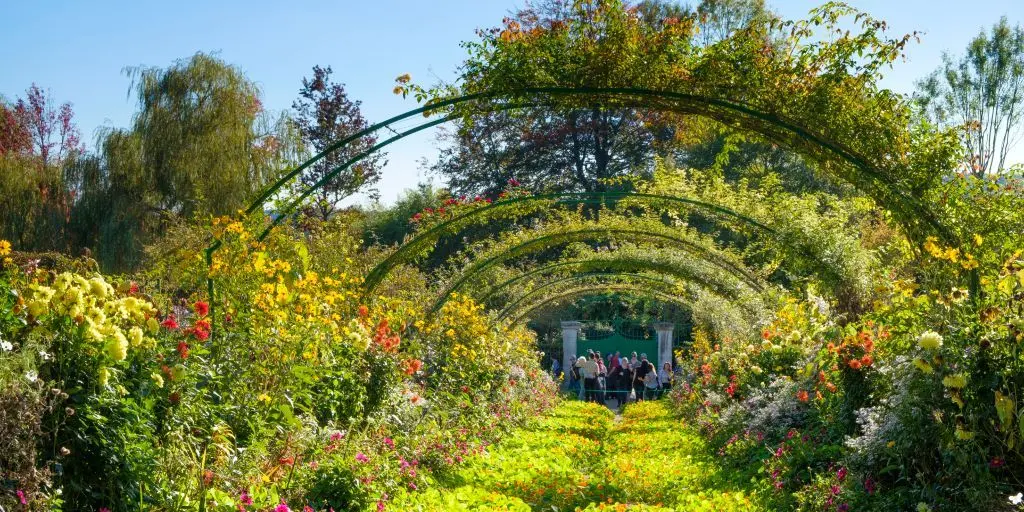
Source: House Beautiful
The Clos Normand Flower Garden
The Clos Normand Flower Garden is a riot of color, with flowerbeds meticulously arranged by hue and season to ensure a continuously changing palette throughout the year. Monet, a passionate horticulturist, personally designed this garden to serve as an ever-evolving source of inspiration. The central alley, covered with iron arches laden with climbing roses, leads to the house, creating a vibrant pathway that seems to invite nature itself indoors. The mix of common and exotic flowers, along with the use of color and light, showcases Monet’s skill in creating a living masterpiece that echoes his paintings’ vibrancy.
The Japanese-inspired Water Garden
Perhaps the most iconic feature of Monet’s Giverny estate is the Japanese-inspired Water Garden, famous for its green Japanese bridge, water lilies, and weeping willows. Inspired by Japanese prints that Monet collected, this tranquil oasis was designed by the artist after the property was expanded. The water garden, with its pond and floating lilies, became the subject of many of Monet’s most famous series, including the “Water Lilies” and “Japanese Bridge” paintings. The reflections on the water’s surface, interplay of light, and the serene atmosphere of the garden capture the essence of Impressionist painting—momentary sensory impressions of the natural world.
Monet’s House and Studio
The house itself, where Monet lived from 1883 until his death in 1926, is painted in pink with green shutters, an extension of the color and creativity found outside. Visitors can explore Monet’s first studio, his collection of Japanese prints, and the rooms where he and his family lived. The studio, later turned into a studio for his Water Lilies series, now displays replicas, providing insight into his working environment and the scale of his ambition with these monumental pieces.
Visiting Claude Monet’s gardens and home in Giverny offers a unique opportunity to step into the world that inspired some of the most important works in the Impressionist oeuvre. It’s a place where the boundaries between art and nature blur, where the gardens serve as a living reminder of Monet’s legacy and his contribution to the way we perceive the world through art.
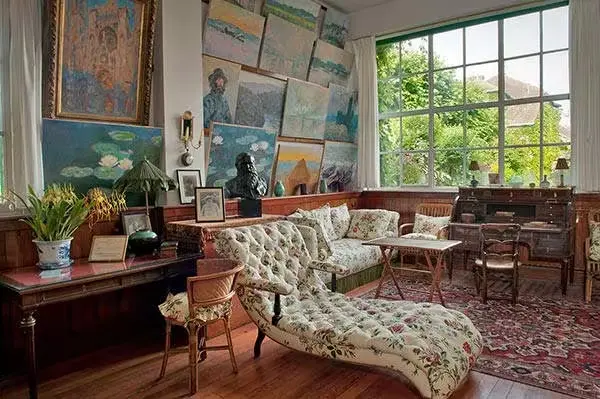
Source: Paris City Vision
The Apple Orchards and Cider Route: Tasting Normandy’s famous ciders and exploring its lush orchards
Normandy, a region celebrated for its rich history and picturesque landscapes, also boasts a deep-rooted tradition in apple cultivation, making it the heartland of France’s cider production. The Apple Orchards and Cider Route in Normandy offers a sensory journey through lush orchards and ancient cellars, where the art of cider making has been refined over centuries. This exploration not only tantalizes the taste buds with the region’s famous ciders but also immerses visitors in the pastoral beauty and agricultural heritage of Normandy.
Normandy’s temperate climate and fertile soil create the perfect conditions for apple orchards to flourish. The region’s apple cultivation history stretches back to the times of the Celts, with cider becoming a staple of Norman identity over the years. The Cider Route, or “Route du Cidre,” meanders through the picturesque Pays d’Auge area, linking small towns and villages such as Cambremer and Beuvron-en-Auge, where time seems to stand still amid the rolling hills and half-timbered houses.
The journey along the Cider Route offers ample opportunities to taste the various ciders that Normandy prides itself on, from the sweet and light to the robust and earthy. Each cidery along the route presents its unique blend of local apple varieties, showcasing the diversity of flavors that can be coaxed from the fruit. The traditional method of cider making in Normandy involves fermenting the apple juice in oak barrels, allowing the natural sugars to transform into the effervescent, golden liquid cherished by locals and visitors alike.
Calvados: The Spirit of Normandy
No exploration of Normandy’s apple orchards would be complete without sampling Calvados, the region’s esteemed apple brandy. Distilleries dotting the Cider Route open their doors to reveal the distillation process that turns cider into this potent spirit, aged in oak barrels to achieve its smooth, complex flavor profile. Tasting sessions offer a glimpse into the craftsmanship behind Calvados, highlighting its place in Normandy’s culinary and cultural landscape.
The Apple Orchards and Cider Route not only offers a journey through the flavors of Normandy but also fosters a deeper connection with the region’s heritage. Many of the orchards and distilleries are family-owned, with knowledge and traditions passed down through generations. Visiting these sites, often set in buildings steeped in history, allows for engaging encounters with the people who keep the spirit of Norman cider alive.
The Historic Pegasus Bridge and Café Gondrée: The story of the first house in Europe to be liberated on D-Day
The story of Pegasus Bridge and Café Gondrée holds a unique place in the annals of World War II history, marking a moment of significant triumph and symbolizing the start of the Allied liberation of Europe. In the early hours of June 6, 1944, D-Day, a daring operation led by British paratroopers resulted in the capture of the bridge over the Caen Canal, near the town of Bénouville in Normandy, France. This strategic victory was crucial, preventing German reinforcements from reaching the beaches where the Allied forces were landing.
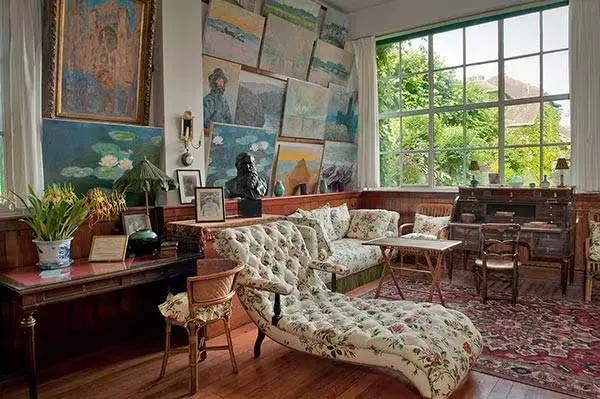
Source: Riffleman Tours
The Capture of Pegasus Bridge
Originally named Bénouville Bridge, it was later renamed in honor of the operation’s emblem, the Pegasus, symbolizing the airborne forces. The capture of Pegasus Bridge was one of the first actions of D-Day, executed by glider infantry of the British 6th Airborne Division. They landed gliders mere meters from the bridge in a remarkable feat of flying, taking the German defenders by surprise and securing the bridge with minimal casualties. This operation was pivotal, ensuring that the Allied forces could move freely across the canal, supporting the broader Normandy invasion efforts.
Café Gondrée: The First Liberated House in Europe
Adjacent to Pegasus Bridge lies Café Gondrée, which holds the distinction of being the first house in Europe to be liberated by the Allied forces during the D-Day landings. The café was run by the Gondrée family, who were secretly involved with the French Resistance, providing invaluable intelligence to the Allies in the lead-up to the invasion. On the day of the bridge’s capture, the Gondrée family welcomed the British soldiers with open arms, offering them wine and celebrating the first step towards France’s liberation from Nazi occupation.
Today, Café Gondrée still stands as a museum and a functioning café, welcoming visitors from around the world. It serves as a tangible connection to the events of D-Day, allowing people to step into a place steeped in history and reflect on the monumental efforts and sacrifices of the Allied forces.
The successful capture of Pegasus Bridge and the liberation of Café Gondrée are commemorated annually, with veterans, military historians, and tourists gathering to honor the courage and strategic brilliance of the operation. The bridge and café have become symbols of the first victory of D-Day, embodying the hope and resilience that would characterize the entire Normandy campaign.
The Pegasus Bridge Museum nearby offers an in-depth look at the operation, featuring artifacts, personal accounts, and interactive exhibits. Visitors can learn about the planning and execution of the airborne operation, the role of the glider forces, and the broader context of the Normandy invasion.
Arromanches and the Mulberry Harbors: Understanding the ingenious technology behind the artificial harbors
Arromanches, a small coastal town in Normandy, France, played a pivotal role in the Allied invasion of Western Europe during World War II. This location is renowned for the Mulberry Harbors, an extraordinary feat of engineering that constituted a critical component of the success of the D-Day landings. The creation and deployment of these artificial harbors underscore the ingenuity and strategic foresight that characterized the Allied forces’ approach to overcoming the logistical challenges of launching a massive amphibious assault.
The Strategic Importance of Arromanches
Situated on the Gold Beach landing area, Arromanches was chosen as one of the sites for the Mulberry Harbors due to its favorable coastal conditions and the need to rapidly offload supplies and reinforcements following the initial D-Day landings. The goal was to establish a secure supply line to support the expanding beachhead in Normandy, essential for the subsequent push into occupied France.
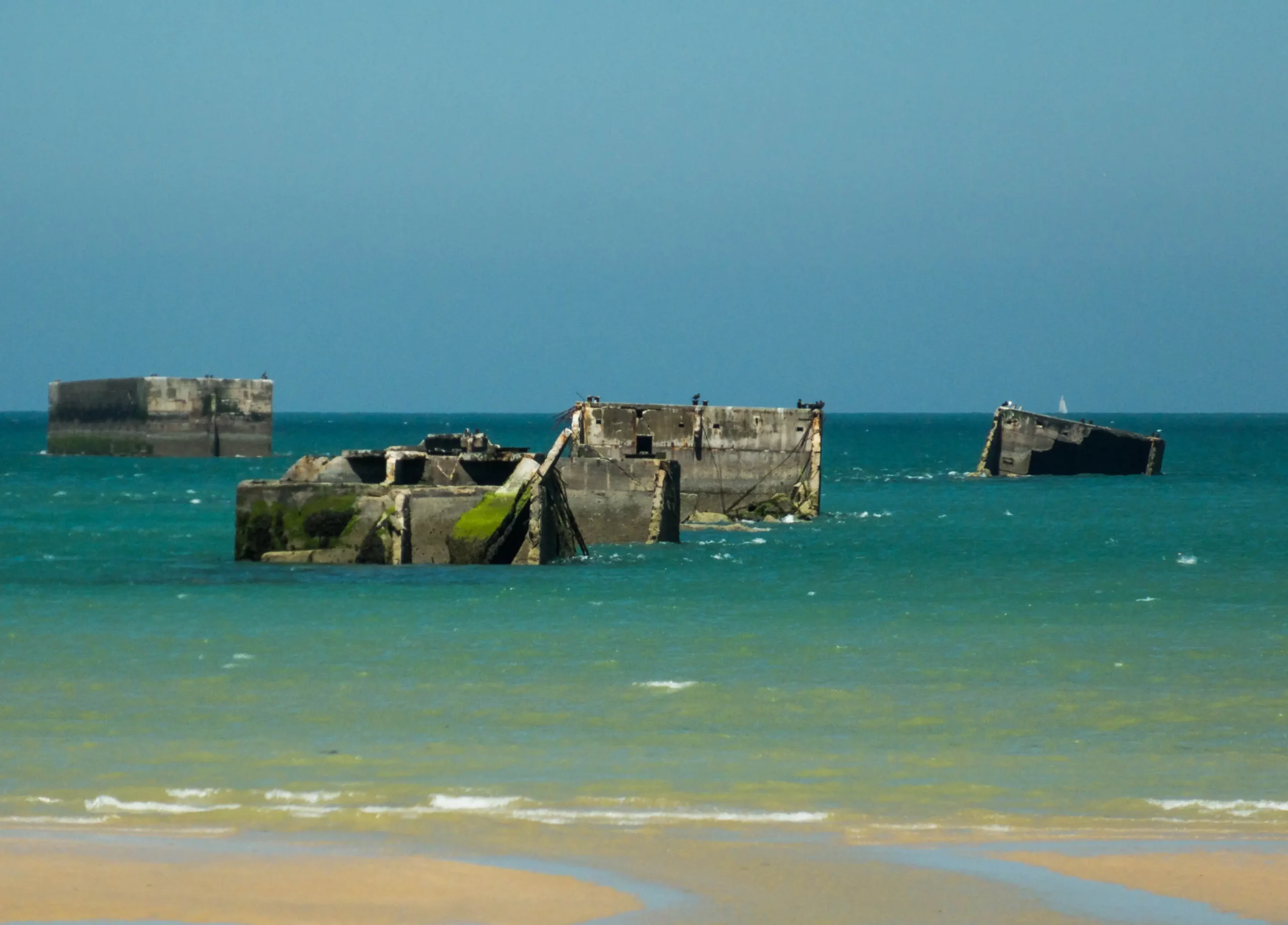
Source: The Mariner’s Museum
Innovation at Sea: The Mulberry Harbors
The Mulberry Harbors were an innovative solution to a significant logistical problem: how to quickly offload cargo and vehicles in the absence of a deep-water port. The harbors were made up of a series of massive, prefabricated concrete structures, including breakwaters, floating piers, and roadways, transported across the English Channel and assembled off the coast of Normandy.
These structures were designed to be quickly deployed, creating temporary, but stable, harbor facilities that could accommodate the unloading of thousands of tons of materials and equipment daily. The design and construction of the Mulberry Harbors were kept in utmost secrecy, with components manufactured in various parts of the UK to prevent detection by enemy forces.
The successful deployment of the Mulberry Harbors at Arromanches was instrumental in the Allied forces’ ability to sustain their operations on the European continent. For months after D-Day, the artificial harbor facilitated the landing of over 2.5 million men, 500,000 vehicles, and 4 million tons of supplies, providing a lifeline for the advancing troops.
Today, remnants of the Mulberry Harbors still visible off the coast of Arromanches serve as a powerful reminder of the scale and ingenuity of the wartime effort. The town itself hosts a museum, the Arromanches 360 Circular Cinema, and the D-Day Landings Museum, which provide visitors with a comprehensive understanding of the technology, planning, and execution behind the artificial harbors, as well as the broader context of the Normandy invasion.
Tips for Making the Most of Your Day Trip
Embarking on a day trip through Normandy offers a unique blend of historical exploration, cultural immersion, and natural beauty. To make the most of this experience, here are some practical tips on navigating the region, interacting with locals, and uncovering hidden gems:
Normandy covers a large area with numerous sites of interest spread out across the region. Decide on a few key destinations based on your interests, whether they’re WWII historical sites, Impressionist artists’ homes, or picturesque villages. Use a map to plan a logical route to minimize driving time and maximize exploration time.
While public transportation exists, the best way to explore Normandy’s countryside, coastal areas, and small villages is by car. This offers the flexibility to stop at lesser-known sites, follow scenic routes, and adjust your itinerary as you discover new places of interest.
While you’ll find English speakers in tourist areas, knowing basic French phrases will enhance your interactions with locals, especially in rural areas. Simple greetings, questions, and expressions of gratitude can go a long way in creating friendly exchanges and may lead to recommendations for local favorites not found in guidebooks.
Normandy is known for its vibrant markets and festivals, which offer a glimpse into local life and regional specialties. From fresh produce and seafood to artisanal cheeses and ciders, these markets are perfect for sampling local flavors. Festivals, often celebrating historical events or local crafts, provide a lively atmosphere and unique cultural experiences.
Many areas in Normandy hold deep historical significance, particularly those related to WWII. When visiting memorials, cemeteries, and battle sites, it’s important to approach with respect and reverence. Likewise, observe local customs and etiquette to show respect for the communities you visit.
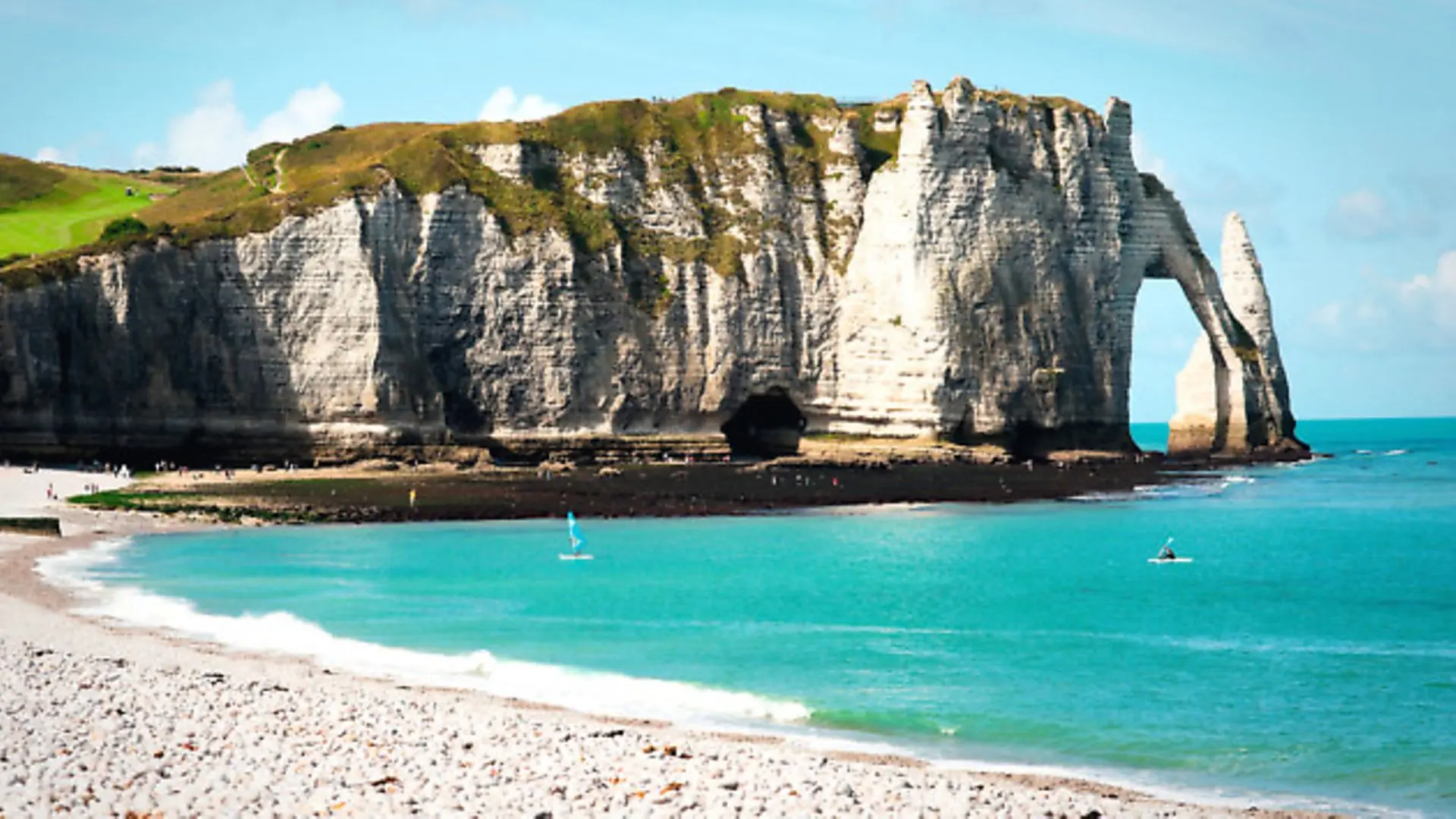
While iconic sites like Mont Saint-Michel and the D-Day beaches are must-visits, Normandy is full of hidden gems waiting to be discovered. Seek out lesser-known towns, coastal paths, and countryside retreats that offer a more intimate experience of the region’s natural beauty and heritage.
For in-depth historical sites, consider joining a guided tour. Knowledgeable guides can provide context, share stories that bring history to life, and point out details you might miss on your own. Many guides are locals with personal ties to the area, offering unique insights into Normandy’s past and present.
Normandy’s landscapes, from its dramatic coastline to its serene countryside, are incredibly photogenic. Remember to capture these moments, but also take time to put the camera away and absorb the beauty and atmosphere of your surroundings.
By following these tips, your day trip through Normandy can be a deeply enriching experience, blending historical exploration with cultural immersion and the simple joy of discovering the unexpected.
Conclusion
The Lasting Impressions of Normandy leaves an indelible mark on all who wander its landscapes, delving into its history, and immerse themselves in its culture. The region embodies a profound emotional and historical depth, tracing back through centuries of architectural grandeur, pivotal wartime moments, and artistic revolutions. This concluding reflection aims to encapsulate the essence of Normandy, inviting you to experience its multifaceted charm firsthand.
The emotional resonance of Normandy’s WWII sites is palpable—each cemetery, memorial, and preserved battlefield stands as a testament to the sacrifices made for freedom. The stories of courage and resilience embedded in these places are a powerful reminder of the cost of peace. Meanwhile, the medieval majesty of Mont Saint-Michel, the gothic splendors of Rouen, and the serene beauty of Monet’s gardens in Giverny offer a journey through time, where history is told not just through texts but through the very stones and landscapes that have witnessed the passage of centuries.
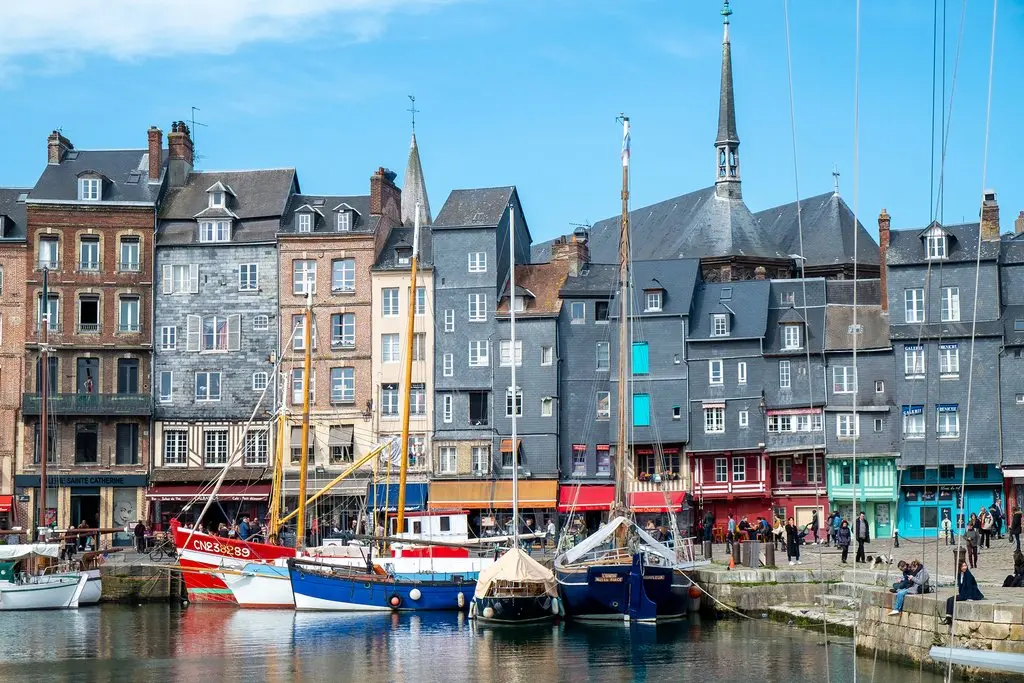
Source: KimKim
Normandy is also a vibrant tapestry of contemporary life, deeply rooted in traditions yet always evolving. The region’s culinary heritage, from creamy Camembert to robust Calvados, reflects a deep connection to the land and sea—a testament to the richness of its natural resources. The local markets, festivals, and the warmth of Norman hospitality provide a glimpse into the everyday joys and communal spirit that define the region’s culture.
To truly understand Normandy is to walk its cobbled streets, to stand upon its windswept shores, and to listen to the stories told by its people and its silent witnesses of history. It’s an invitation to witness the dawn light breaking over the English Channel, casting a soft glow on the remnants of the Mulberry harbors at Arromanches, or to experience the tranquility of a quiet village, where the past and present coexist in harmony.
Normandy’s blend of history, culture, and natural beauty is a reminder of the enduring allure of places deeply intertwined with the human story. It beckons not just as a destination to be visited but as an experience to be lived—a canvas upon which your own memories will be painted.
The lasting impressions of Normandy are those of inspiration, reflection, and a profound connection to the broader tapestry of human history. This region, with its poignant reminders of our shared past and its breathtaking landscapes, offers an unparalleled opportunity to explore, learn, and be moved.



